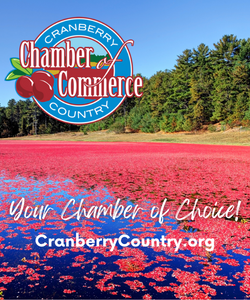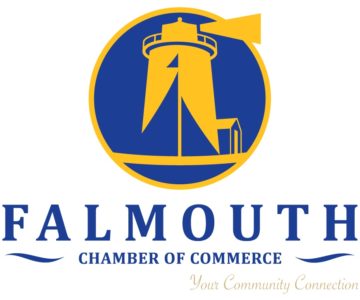By Douglas Karlson
There’s a problem on the South Shore, but there’s also an opportunity, and you drive by it every day.
The problem, say planners, is outdated attitudes toward housing that threaten to stifle economic growth.
The opportunity: aging malls and strip malls that can be redeveloped into mixed-use properties, creating vibrant walkable communities that could attract a younger workforce and the new businesses to hire them.
Housing is just one part in the symphony of interconnected elements, in addition to infrastructure, workforce, business, demographics and government, identified in an economic development effort by the South Shore Chamber of Commerce, called “South Shore 2030, Choosing Our Future.” Helping to conduct that complex orchestra is Peter Forman, president and CEO of the South Shore Chamber of Commerce.
It’s a performance that began about 13 years ago, after the Old Colony and Greenbush commuter rail lines were restored. Upon completion of that project, business leaders recognized that the region was still not adequately positioned to promote the kind of long-term economic growth required to maintain prosperity.
As planners in the Commonwealth examine the complex formula needed to foster economic growth over the next decades, housing is increasingly seen as a critical factor. That’s particularly true on the South Shore, where an aging demographic is retiring, and where younger workers are reluctant to settle.
“We started looking at how to take advantage of this,” recalls Forman.
As communities in the region asked for help developing their economies, the chamber decided to commission an Atlanta-based consulting group, Market Street Services, to help the region strategize to be more economically competitive.
Citing changing demographics and an evolving business environment, the consultants reported that the South Shore economy was facing trouble.
“The message was our economy is shifting underneath us and we need to adjust if we want to compete. We needed to retool to attract new companies and have new businesses grow on the South Shore,” says Forman. “It was an alert that we had to start preparing for the future.”
Based on the study, the South Shore Chamber of Commerce and the South Shore Economic Development Corporation launched the South Shore 2030 project. To build the foundation needed for a strong economy in the future, the project identified a number of goals, including attracting a younger workforce and businesses to employ them, revitalizing communities, and improving infrastructure. Now that the report is complete, implementation has begun.
Attracting A Workforce
To attract a younger workforce, it’s important that the region has the right mix of housing. For older empty nesters that means creating townhouses, in walkable communities, so they can downsize, making their larger homes available for growing young families. Younger people, too, would be attracted to affordable apartments located close to vibrant village centers.
But according to the chamber’s 2030 housing report, published in late 2017, the housing “hand-off” from the older to younger generation isn’t happening as it is in other parts of the country, because older residents are reluctant to sell their homes for fear they won’t find suitable smaller homes to move into.
The report concludes that “much more must be done to accommodate younger workers, families, and the generation between their early 20s and mid-30s.”
It won’t be easy. To attract that demographic, a critical workforce that will, in turn, attract business growth, the South Shore must compete against Boston and other communities surrounding the city that are close to mass transit.
“The types of businesses we want to attract have lots of options as to where to go. You have to be competitive,” Forman insists.
The report estimates that economic growth of just 1 percent will require that 44,000 new housing units be built by the year 2030. But towns are often reluctant to approve new housing projects.
Community Outreach
“We’re trying to change some of the misconceptions. The suburbs are great at building large lot detached homes, but the market has moved,” explains Forman.
That outreach includes advocating for changes to zoning laws to allow for multi-family homes clustered on smaller lots. According to Forman, zoning laws are out of line with market demand.
“I’ve been up many nights at planning board meetings to explain what that kind of housing means to economic development,” says Forman. “If you don’t have the housing, you won’t be able to attract a workforce. And if you don’t have the workforce, you’re not going to attract business.”
Forman summarizes the recipe as “people and place,” and says they’re the fundamental ingredients to promote business growth.
The goal, he says, is to create wealth-creating jobs by attracting businesses that will bring outside money into the region, as opposed to businesses that circulate money that’s already in the region.
According to Forman, the general plan has been received well by people who are involved in economic development. But it’s not always easy to convince communities to revise zoning laws, and so far, the results have been mixed.
“Some people get it, but there’s some push-back by people opposed to new housing,” says Forman. It’s his organization’s job to address concerns that development will have a negative impact on traffic, school budgets and property values.
Revitalizing Main Street
Forman notes that communities are more willing to embrace changes to zoning when they see that commercial areas are threatened with economic blight.
“They don’t like the idea of losing a major tax base such as a mall, or boarded-up shops on Main Street. We’re seeing a lot of local acceptance of mixed-use housing near retail areas that are struggling. When people see something that was vibrant go into decline they’re more receptive,” observes Forman.
As successful examples of revitalized commercial areas, he points to Cordage Park in Plymouth, and Merchants Row in Hanover, as well as the Kingston and Hanover malls, which are being redesigned.
Forman also looks to old office parks built in the 1960s and ‘70s that could be redesigned with housing and retail, provided there are improvements made to wastewater and transportation infrastructure.
“We just see a lot of opportunity,” says Forman.
So does James Kelliher, principal architect at Axiom Architects in Hanover. His firm is currently designing a number of mixed-use properties on the South Shore.
A Focus On Design And Planning
Kelliher grew up on the South Shore, in Norwell, but went away to get his undergraduate degree at Cornell and a master’s degree in architecture with a focus on urban design at the University of Arizona. After working for a number of years out of state, where mixed-use developments were widely accepted, he moved back to the South Shore where he was both surprised and encouraged to see the acceptance of mixed-use philosophy in New England villages, which have historically been resistant to new zoning.
“The aging strip malls are the best opportunity we have to reinvest the mixed-use lifestyle center,” says Kelliher.
While it’s sometimes hard to see how a quaint New England town will accept new mixed-use developments, the reality, observes Kelliher, is that such towns are dotted with outdated strip malls built in the 1970s. He says such properties can be redeveloped without interfering with the historic values of the New England towns.
To get there, suggests Kelliher, a shift in thinking is required. Following World War II, vibrant village centers were further undermined by the emphasis on single family suburban homes, rather than a mix of rooming houses, multifamily houses, apartment buildings and single family homes. Finally, the construction of large malls further undermined commerce on towns’ Main Street.
Echoing the ideas in the South Shore 2030 housing report, Kelliher suggests that a mixed-use approach represents a complex interplay of elements needed for economic growth, where commercial development attracts residential development, and vice versa. “It’s my hope that the two types can encourage each other,” he says.
He cites Hingham Shipyard as a successful model, and notes how even large cities like Los Angeles have re-integrated residential housing into what was previously a strictly commercial downtown.
To create successful mixed-use development, says Kelliher, owners and developers must look at all the creative options rather than take the first economically viable plan. He says it’s important that urban designers get involved. They can bridge multiple disciplines, from architecture, planning, landscaping, parking and open space designs.
The challenge is to design in such a way that respects the traditional nature of the region.
“As a designer, how do we integrate these projects into the suburban fabric in a way that local communities will accept?”
Kelliher finds the recommendations outlined in reports like South Shore 2030 and the state’s Housing Choice Initiative to be useful. Both studies note that the shortage of affordable housing is a crisis, and call on towns to integrate new housing in a sensible way to attract younger residents.
But too often, in the past, observes Kelliher, mixed-use developments haven’t been pursued because developers find residential projects to be more profitable and have had difficulty leasing commercial space. Developers prefer to replicate time-tested formulas, so new ideas, such as mixed-use developments, take years to gain acceptance and take hold in a community.
Now, Kelliher sees more and more developers incentivized to build mixed-use projects in areas that were previously commercially zoned, or where commercial and residential projects were not allowed to be combined.
Even so, it still isn’t always easy to get such projects approved. There’s often resistance to larger housing projects for fear of the impact they will have on the rural character of quaint New England towns.
According to Kelliher, the question, becomes “how can we creatively integrate mixed-use projects into the existing community?”
The answer, he suggests, is good urban planning, and a focus on design and aesthetics. “We want to create more community-walkable layouts rather than simply building at the back of a large parking lot.”
He suggests that there are new configurations that are yet to be explored, which can convert aging malls and strip malls into what he terms “lifestyle centers,” or livable-walkable communities with homes located adjacent to stores, theatres, restaurants and transit.
While Hingham Shipyard as a good example of such mixed use developments on the South Shore, Kelliher stresses that it’s an evolutionary process that will likely evolve over many years. Successful creative developments will influence others, he says, and gain acceptance. That will lead to ongoing innovation and replication. “Each project becomes better than the one before, commercial districts become more vibrant.”
Throughout the country, he observes, “we’ve seen the return of mixed use development over the past 15 to 20 years, but what’s exciting is seeing them introduced in the South Shore. I’m very optimistic.”
He sees it as a way to revive commercial activity that is starting to disappear. “With the right creative input, we can start to redesign how we develop aging properties to meet the needs of what we need today and foster economic growth.”
Concludes Kelliher, “the opportunities, for me, are endless.”























